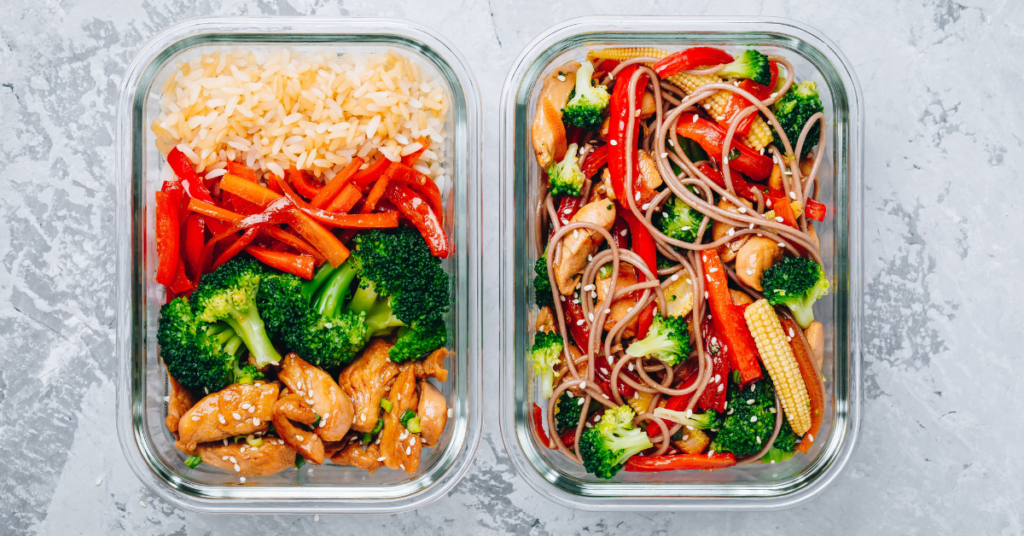Are you tired of shelling out the big bucks every time you grab a meal from your favorite restaurant or settle for a fast food burger during your lunch break?
Do you cringe at the total price after scanning the aisles of your local grocery store for “healthy” ready-made meals? Spending hundreds of dollars on food that’s not even good?
If so, you’re not alone.
Many of us are awakening to the reality that eating out regularly or opting for expensive pre-made meals is not sustainable for our wallets.
So, what if I told you that there’s a secret weapon used by preppers, fitness enthusiasts, and busy families alike that helps save money on food and contributes to a healthier lifestyle?
The answer is meal prepping, an increasingly popular trend that involves preparing and pre-portioning home-cooked meals for the week ahead.
But how much does it cost?
Read on as we dive into the world of ingredients, containers, kitchen tools, and time investments to help you determine if meal prepping is the budget-friendly solution you’ve been searching for.
Comprehensive Breakdown: How Much Does Meal Prepping Cost
Breaking down meal-prepping costs involves considering several factors, such as the number of people you’re prepping for, the frequency of meal preparation, the types of ingredients used, and storage considerations.
When I prep meals for myself, I typically aim for a cost-effective and balanced menu that includes protein, vegetables, and grains.
On average, my solo meal prep costs me around $35 to $55 per week. This rises to $70 to $110 a week when prepping for a couple and approximately $140 to $220 weekly average cost for a family of four.
Being diligent about planning my meals and incorporating cost-saving hacks, such as buying in bulk and choosing less expensive ingredients, helps me stick to my budget while enjoying various delicious and healthy home-cooked meals.
Ultimately, meal prepping proves to be a smart investment in the long run that saves both time and money.
Introduction to Meal Prepping and Its Benefits
As a busy individual constantly juggling work, exercise, and other daily activities, I have found the practice of meal prepping to be a game changer in my life. It simply refers to cooking and preparing one week’s worth of meals simultaneously. [1]
By doing this, you not only save time and effort but also significantly reduce my spending on dining out.
In my experience, the benefits extend beyond financial savings. This practice allows me to make healthier food choices as I control my meals’ ingredients, portion sizes, and nutritional value.
And contrary to popular belief, meal-prepped food can be just as tasty and diverse as the cuisine found in restaurants. In fact, with proper planning and practice, anyone can become proficient at preparing delicious and budget-friendly meals for themselves or their family.
The Concept of Meal Prepping and Why People Choose It
Instead of agonizing over daily meal decisions and resorting to unhealthy, expensive options like fast food or take-out, I experience greater peace of mind knowing that my meals are already planned and waiting for me.
This has led to:
- Less stress
- better portion control
- increased awareness of my food choices
- A more balanced, nutritious diet
Plus, who could argue with having fewer dishes to clean up after a long day at work?
Average Weekly and Monthly Costs of Meal Prepping
I’ve found that the average weekly cost can fluctuate depending on factors such as dietary preferences, food prices in your area, and how many individuals you’re meal prepping for. [2]
However, a general range would be between $35 to $55 per week for a single person. This equates to roughly $140 to $220 per month. Considering that these numbers include breakfast, lunch, and dinner for each day, the cost to meal prep yourself is reasonable and potentially cheaper than eating out.
I’ve kept my own meal prep costs relatively low by focusing on affordable ingredients with high nutritional value, such as grains, legumes, and seasonal produce.
I cannot stress enough the importance of planning your meals in advance and shopping for groceries with a detailed list to avoid impulse purchases.
Evaluating the Long-Term Financial Impacts of Meal Prepping
Spending a few hours each week preparing meals in advance can lead to significant financial savings. Meal prepping promotes strategic grocery shopping, allowing for cost-effective purchasing while also reducing food waste.
Investing in durable meal prep containers and quality kitchen equipment may seem expensive initially, but it pays off over time. The containers help keep meals fresh and transportable, while efficient kitchen equipment makes meal preparation easier.
The substantial savings from meal prepping quickly offset these initial costs.
Practical Guide to Budget-Friendly Meal Prepping

As a seasoned meal prepper, I’ve realized the importance of planning and organization to save time and money. Through trial and error, I’ve developed a few essential methods to minimize costs and maximize efficiency in the meal-prepping process. [3]
Shopping Smart: Tips to Reduce Meal Prep Costs
Here are some practical tips that have helped me save money when shopping for ingredients:
- Buy in bulk: Purchasing large quantities of grains, beans, and pasta often leads to significant savings. Warehouse stores and online retailers usually offer better deals on bulk items. Read here about our Best Canned Foods.
- Go for seasonal produce: Fresh fruits and vegetables are typically cheaper when in season. Plus, they have the added benefit of being more flavorful and nutrient-rich foods.
- Opt for store brands: Often, store-brand products are just as good as name-brand versions but come at a fraction of the price.
- Look for sales: Keep an eye on weekly ads and store promotions for deals on staple ingredients. Stock up on discounted items with a long shelf life, such as canned goods and frozen vegetables.
- Plan meals around pantry staples: Common ingredients like pasta, rice, and legumes are inexpensive and versatile. Using these budget-friendly items as the base for your meals can help keep your food costs down further.
For the preppers under us, check out How To Can.
Essential Equipment for Budget-Conscious Meal Prepping
First and foremost, investing in a good quality, durable set of food storage containers is essential. These reusable plastic or glass containers will save you money over time and ensure that your meals stay fresh throughout the week. I prefer using glass over plastic containers, as they are more eco-friendly and can safely be used in the microwave.
A slow cooker or Instant Pot is another essential tool for cost-effective meal prep. These appliances allow you to cook in bulk, translating into significant savings on your grocery bill.
Having a slow cooker has opened up a world of new, affordable recipes using cheaper cuts of meat that still turn out tender and delicious.
Lastly, good-quality, sharp knives, and a reliable cutting board are indispensable for meal prepping. Trust me, having the proper tools to chop and prep your ingredients will make the process more enjoyable, save you time, and reduce food waste. This, in turn, will help keep your overall meal prep time and costs down.
Budget-conscious meal prepping can be an enjoyable and money-saving experience with the right equipment and a little creativity.
Key Considerations in Meal Prepping
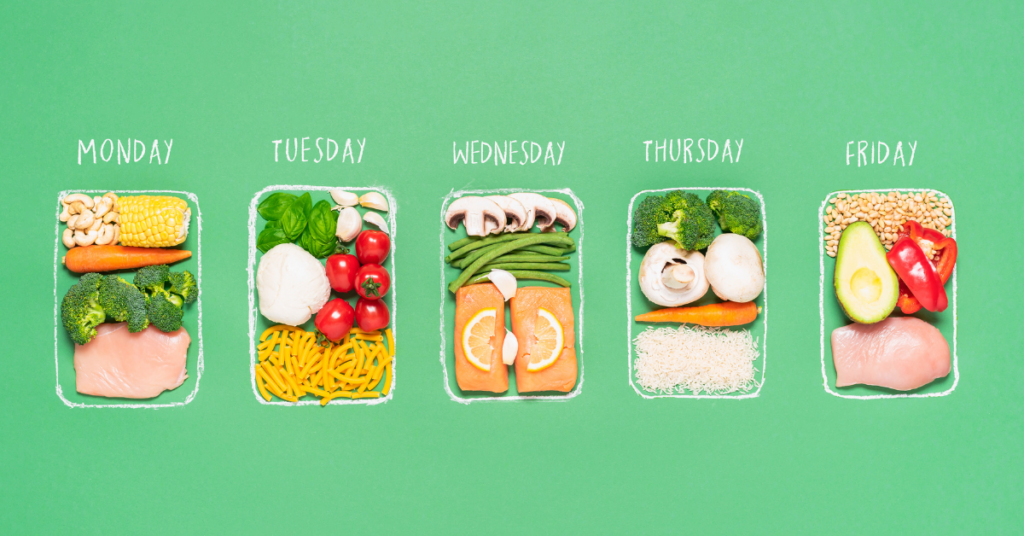
When considering meal prepping, there are a few key aspects you should take into account before diving in. The first thing to consider is the number of people you’ll be meal prepping. Will it be just for yourself, for a couple, or for an entire family? This will significantly impact your grocery expenses and cooking time.
Another essential factor to consider is the types of ingredients you plan on using. Are you focusing on incorporating lots of fresh fruits and vegetables, or will you rely more on pantry staples like pasta, rice, and beans?
Keep in mind that choosing more affordable ingredients can help to keep your meal prep and grocery costs under control.
Storage
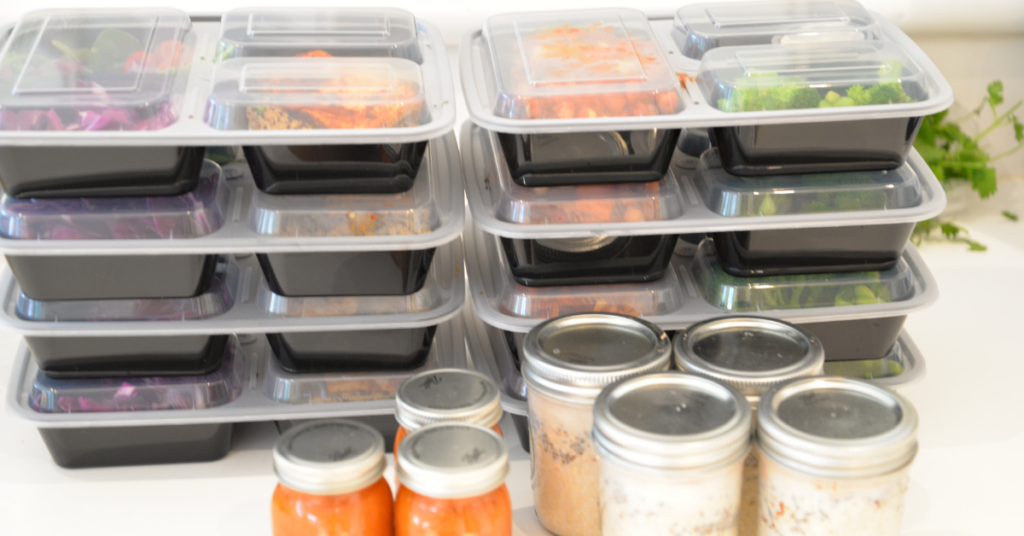
Lastly, think about the storage space you have for your prepped meals. If you’re strapped for space, you may need to be creative with your meal planning and storage solutions.
By considering these key considerations, you can set yourself up for success with meal prepping and potentially save a significant amount of money in the long run. [4]
Deciding the Number of Meal Preps Per Week and Prepping Meals in Advance
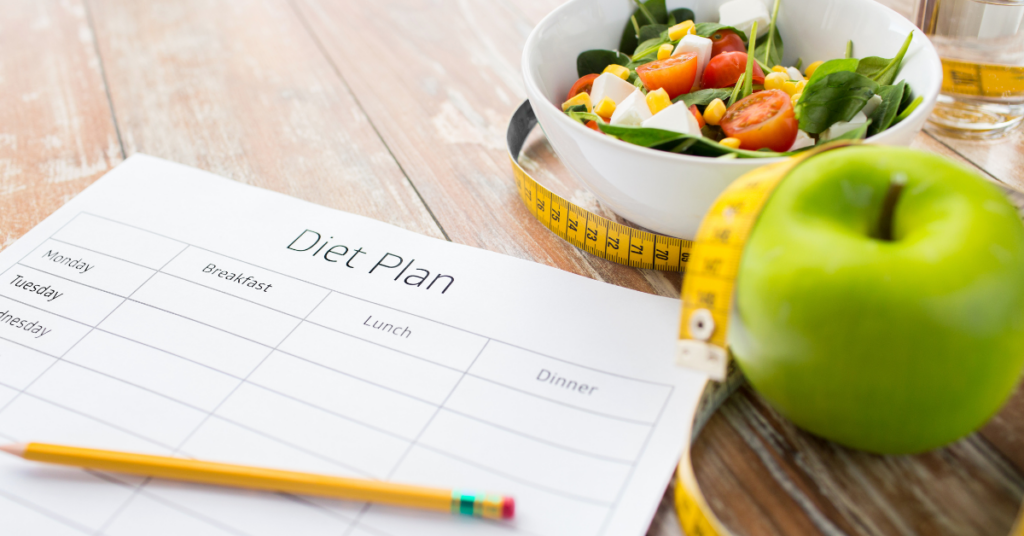
One of the main concerns when deciding on meal prepping is determining the number of meals to prepare per week.
This decision greatly depends on various factors, such as personal preferences, work schedules, and family needs.
Personally, I find it most effective to plan for the entire week in advance, including weekend meals. This helps me maintain a consistent healthy eating pattern and saves time on hectic weekdays.
To establish a successful meal prep routine, it’s crucial to set aside time to prepare meals in bulk once or twice a week, ideally on Sundays and Wednesdays.
This method significantly reduces overall cooking time, as several meals are prepared and stored simultaneously. Preparing meals in advance also allows me to enjoy other activities during the work week without worrying about cooking. It keeps me from resorting to unhealthy fast food options. By setting a schedule and choosing a consistent meal-prep day, I can easily integrate meal-prepping into my weekly routine, making it a sustainable long-term habit.
Variety in Recipes and Meal Prep’s Role in Avoiding Overeating
I cannot stress enough how crucial it is to keep things exciting and enjoyable.
With a diverse selection of tasty dishes, you’ll look forward to each meal and avoid burnout from repeatedly eating the same thing.
Not only does having an array of recipes boost your overall enjoyment, but it also plays a significant role in preventing overeating. You’ll be less tempted to reach for unhealthy foods and snacks or indulge in excessive portions by providing delicious and satisfying meals.
Meal prepping helps me maintain a balanced diet and stay on track with my health goals, which is a great advantage in the long run.
Meal Prep versus Meal Kit Services: A Cost and Convenience Analysis
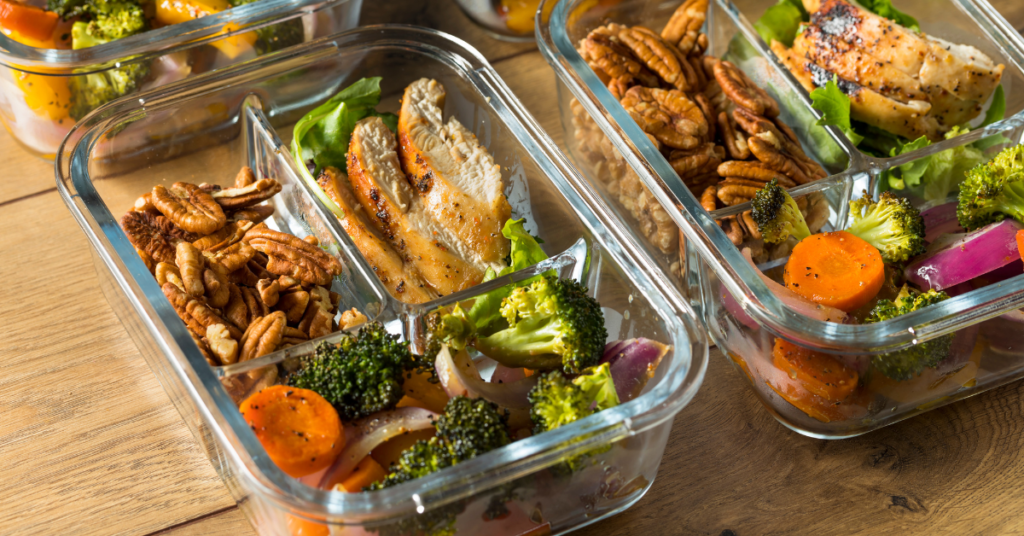
Meal kit services have become popular due to their convenience and varied offerings.
Price
However, meal prepping is more cost-effective and flexible than meal kit delivery services. The average cost of meal kit services is about $9 per meal, which can accumulate quickly, particularly for families or those on a budget. In contrast, meal prepping allows for bulk buying, planned menus, and advance preparation, leading to substantial savings.
Control
Meal prepping also offers more control over ingredients and portion sizes, catering to specific dietary needs and preferences. Unlike meal kit services with limited weekly options, meal prepping allows the freedom to experiment with varied recipes and adjust tastes accordingly.
In summary, while meal kit services have advantages, meal prepping emerges as the more cost-effective and flexible choice. Planning and preparing meals in advance ensures the enjoyment of nutritious, homemade meals without straining the budget.
Understanding Meal Prep Delivery Services: Costs, Types, and Benefits
Meal prep delivery services have risen in popularity, with the global market reaching $10 billion in 2020. These services provide a solution for those seeking healthy meals without grocery shopping and meal planning. They offer a chance to try new recipes, build cooking skills, and save time.
There are many food delivery companies with different types of meal prep services: some provide ingredients with cooking instructions, others deliver fully prepared meals, and some tailor meal plans with the help of a chef or nutritionist. Evaluating the company’s ingredient sourcing, menu variety, and cost is essential for choosing the best service for your needs.
Comparing Costs and Types of Meal Prep Delivery Services
Meal prep services vary, each catering to different lifestyles and budgets. Some offer prepped ingredients, others provide reheatable meals, and some offer personalized plans. Consider the cost, ingredient sourcing, and menu variety when choosing a meal prep service.
Benefits and Economic Considerations of Meal Prep Delivery Services
A meal prep service can offer several benefits, such as exploring new recipes, improving cooking skills, and saving time. It’s important to understand the economic aspects of these services to make a beneficial and budget-friendly decision.
Meal Prepping: Making the Final Decision
Ultimately, the decision to start meal prepping lies in your hands. As someone who has experienced the benefits firsthand, I confidently assert that meal prepping is a fantastic way to save time and money and eat healthier.
While the initial costs of purchasing groceries and meal prep containers may seem high, the long-term savings and convenience are well worth the investment.
In my experience, meal prepping has allowed me to cut my average meal cost to $4 per meal, creating significant monthly and annual savings.
The flexibility of cooking various delicious meals and the efficiency of investing a few hours per week to prepare everything is truly invaluable. As a busy individual, I recommend giving meal prepping a try and witnessing the benefits for yourself!
Assessing the Overall Worthiness of Meal Prepping
After carefully examining the costs and benefits of meal prepping, this approach to meal planning and cooking is absolutely worthwhile. It saves me a significant amount of money in the long run, helps me maintain a healthier diet, and minimizes the time and effort required to prepare meals throughout the week. You’ll also be prepared for any emergencies that might hold for a few days.
Furthermore, it allows me to be intentional about my food choices, leading to a satisfying and diverse meal plan.
In summary, embracing meal prepping as part of my routine has proven to be an efficient, cost-effective, and health-conscious decision.
The lasting benefits far outweigh the initial investment in time and effort, and I wholeheartedly recommend meal prepping to others looking to streamline their meal planning and optimize their food budget.
For more information about our emergency preparedness, read our Prepping List.
